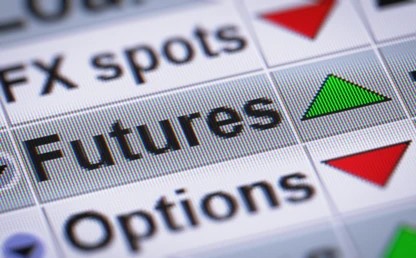



Understanding Futures Trading: A Comprehensive Guide
Futures trading is a fundamental part of financial markets, allowing traders to speculate on the future price movements of various assets. Whether you're an experienced investor or a beginner looking to explore this field, understanding the key concepts of futures trading is essential. This blog provides a detailed breakdown of futures trading, explaining its mechanics, key features, types of contracts, advantages, risks, and strategies.
1. What is Futures Trading?
Futures trading involves buying and selling contracts that commit the trader to buy or sell an underlying asset at a predetermined price on a specified future date. These contracts are standardized and traded on regulated exchanges, making them highly liquid and accessible.
Futures contracts are used for both hedging (risk management) and speculation (profit generation). Traders and investors use futures to protect their portfolios from adverse price movements or to gain from price fluctuations in stocks, indices, commodities, currencies, and interest rates.
2. How Does Futures Trading Work?
Futures trading is based on a contractual agreement between two parties:
Each contract has a specific lot size, expiration date, and settlement process. Since futures contracts are traded on an exchange, they require a margin deposit, which acts as collateral and helps maintain financial security.
Example: If an investor buys a futures contract for gold at ₹1,50,000 per 10 grams and the price rises to ₹1,55,000, they make a profit of ₹5,000 per contract. Conversely, if the price drops to ₹1,45,000, they incur a loss of ₹5,000 per contract.
3. Key Features of Futures Contracts
4. Types of Futures Contracts
Futures contracts cover various asset classes, including:
Each type of futures contract has unique factors influencing its price, such as supply and demand, economic data, and geopolitical events.
5. Benefits of Futures Trading
A. Hedging Against Market Risk
Hedging with futures helps businesses and investors reduce risks associated with price fluctuations. For example, a farmer selling wheat futures at ₹2,500 per quintal can lock in the price, ensuring stability even if market prices drop.
B. High Leverage
Futures trading requires only a margin deposit, allowing traders to control larger positions than their capital would otherwise permit.
C. Market Liquidity
Since futures contracts are actively traded on exchanges, they provide ample liquidity, enabling easy entry and exit of positions.
D. Portfolio Diversification
Investors can diversify their portfolios by trading different types of futures contracts, thereby spreading risk across multiple asset classes.
E. Price Discovery
Futures markets help determine fair prices for underlying assets based on supply, demand, and global economic conditions.
6. Risks of Futures Trading
A. Leverage Risk
While leverage can amplify profits, it can also lead to significant losses if the market moves against a trader’s position.
B. Price Volatility
Futures markets are highly volatile, and price swings can result in substantial losses if not managed properly.
C. Margin Calls
If a trade moves against a trader’s position, they may receive a margin call requiring additional funds to maintain their position.
D. Expiration Risk
Futures contracts have fixed expiry dates, and traders must either roll over their contracts or settle them before expiration.
E. Liquidity Risk
Some contracts may have lower liquidity, making it harder to exit positions quickly without significant price slippage.
7. Trading Strategies in Futures Markets
A. Trend Following
Traders use technical indicators like moving averages to identify trends and trade in the direction of the market.
B. Spread Trading
This strategy involves buying and selling related futures contracts to profit from price differences.
C. Arbitrage
Traders exploit price differences between futures and spot markets for risk-free profits.
D. Hedging
Institutions and investors use futures to protect against adverse price movements in their portfolios.
E. Scalping
A short-term strategy where traders take advantage of small price movements for quick profits.
F. Swing Trading
Traders hold positions for several days to capitalize on short-term market fluctuations.
8. Regulatory Framework for Futures Trading
Futures trading is governed by strict regulations to ensure transparency and protect investors. Regulatory bodies such as the Securities and Exchange Board of India (SEBI) oversee futures trading in India, while the Commodity Futures Trading Commission (CFTC) regulates futures markets in the U.S.
Regulations include:
9. How to Start Trading Futures?
Step 1: Choose a Reputable Broker
Selecting a SEBI-registered broker with competitive fees and good trading platforms is essential.
Step 2: Open a Trading Account
Traders need to open a futures trading account with a broker and deposit the required margin.
Step 3: Learn Market Fundamentals
Understanding market trends, economic indicators, and technical analysis helps traders make informed decisions.
Step 4: Develop a Trading Plan
A well-defined strategy, including entry and exit points, risk management, and stop-loss orders, is crucial for success.
Step 5: Start with Paper Trading
New traders should practice with a demo account before investing real money.
10. Conclusion
Futures trading is a powerful financial tool used by traders, investors, and businesses for hedging and speculation. While it offers significant opportunities for profit, it also carries inherent risks that require careful management.
To succeed in futures trading, traders should develop a sound strategy, manage risk effectively, and stay updated with market trends. If you are new to futures trading, consider starting with small positions and using risk management techniques to protect your capital.